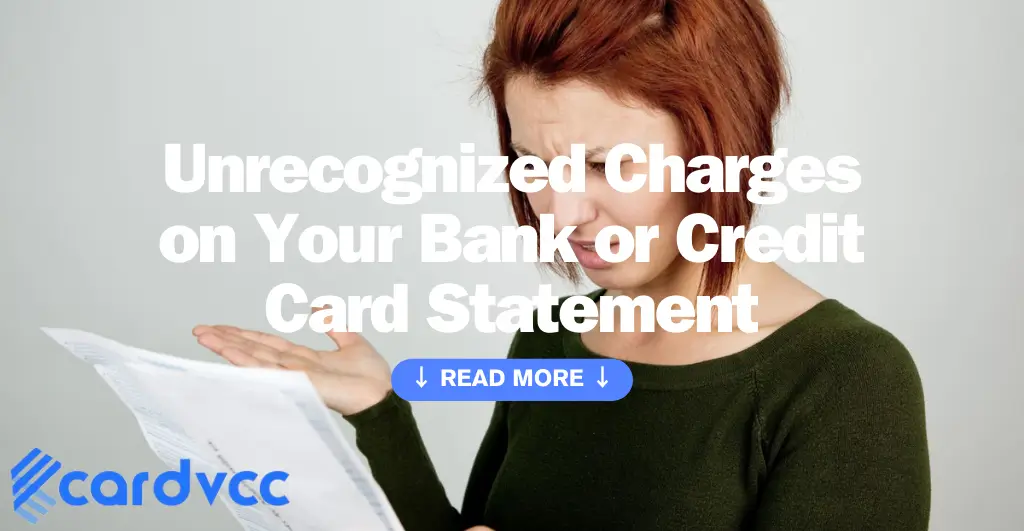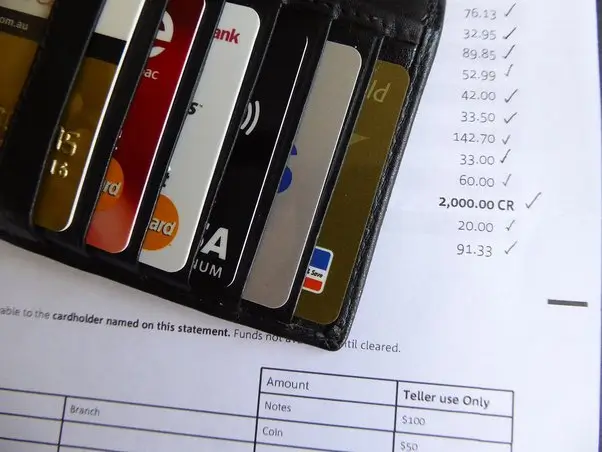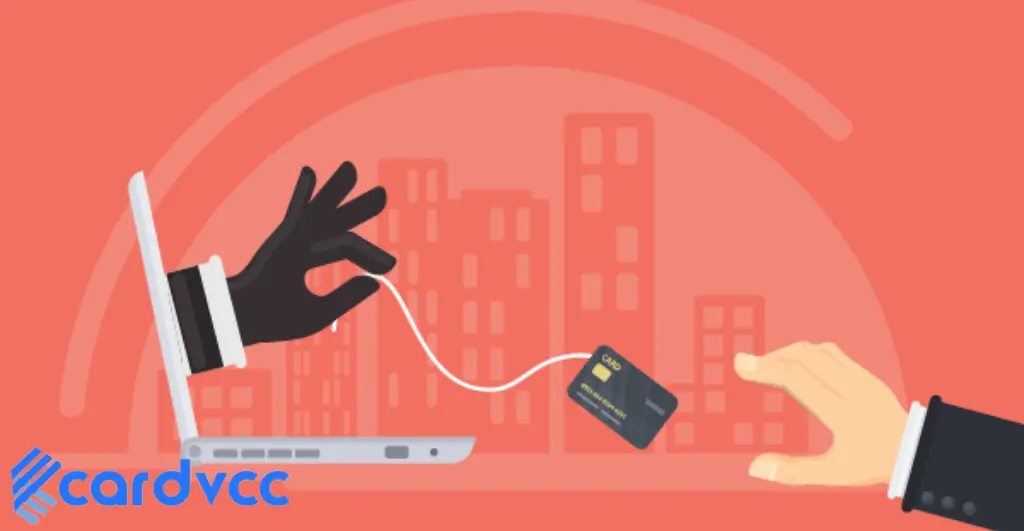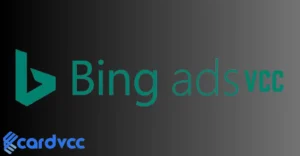Unrecognized charges on your bank or credit card statement require swift action. Check your transactions for errors and fraud, and report any issues promptly to your bank or credit card company.

It can be unsettling to see unfamiliar charges on your bank or credit card statement. While some charges may be legitimate purchases you have made but forgotten about, others can be indications of fraud or errors. To ensure that your finances are secure and accurate, you must review your transactions regularly and report any issues promptly.
We will guide you through the steps to take when dealing with unrecognized charges on your bank or credit card statement, including how to spot fraud and mistakes, how to dispute charges, and how to prevent future issues from occurring.
What Are Unrecognized Charges?
Unrecognized charges are charges that appear on your bank or credit card statement that you did not authorize or make. It is important to monitor your accounts regularly and report any unrecognized charges to your financial institution immediately to avoid being a victim of fraudulent activity.
Unrecognized charges on your bank or credit card statement can be worrying, especially if you don’t know where they came from. These charges can range from small amounts to large sums of money, and they could be an indication of fraud or a mistake that needs to be corrected. In this article, we’ll show you how to identify unrecognized charges and the common types of unrecognized charges that you might encounter.
Identifying Unrecognized Charges
The first step in identifying unrecognized charges is reviewing your bank or credit card statement regularly. When you receive your statement, go through it carefully and look for any transactions that you don’t remember making or that you didn’t authorize. Some unrecognized charges may be labeled as “pending” or “authorization only,” and they may not show up as actual charges until a few days later. If you notice any unrecognized charges, don’t panic. Instead, contact your bank or credit card company immediately and report the issue. They will investigate the charges and will work with you to resolve the situation.
Common Types Of Unrecognized Charges
There are several common types of unrecognized charges that you might encounter. Some of these include:
- Identity theft – when someone gains access to your personal information and uses it to make purchases or open accounts in your name.
- Fraudulent charges – when someone uses your credit card or debit card without your permission.
- Double charges – when a vendor accidentally charges you twice for the same transaction.
- Subscription charges – when a subscription renewal is automatically charged to your account, and you forget about it.
- Unauthorized small charges – When a hacker gains access to your credit card details and tests with small purchases that may go unnoticed.
By knowing these common types of unrecognized charges, you can be more vigilant in reviewing your statements and catching any fraudulent or mistaken transactions early on. Always remember to immediately report any suspected fraudulent activity to your bank or credit card company as soon as possible.
Why Do Unrecognized Charges Occur?
Unrecognized charges on your bank or credit card statement can happen for several reasons. It could be due to a mistake on the retailer or bank’s part, fraudulent activity, or even a forgotten subscription. Checking your statements regularly and reporting any unfamiliar activity can help prevent future occurrences.
Unrecognized charges on your bank or credit card statement can be a stressful experience. You may feel anxious or frustrated, as you wonder why this is happening to you. However, it’s essential to remember that these charges may occur for various reasons and may not necessarily be a cause for alarm. Understanding the reasons behind these charges can help you take necessary measures to avoid them in the future. Here are some common reasons why unrecognized charges occur:
Billing Errors
Billing errors are one of the primary reasons why you might see unrecognized charges on your bank or credit card statement. These errors can occur due to a variety of reasons, such as a misread or mistyped number, a technical glitch, or a processing error. In such cases, the charge may appear on your statement with a different name or amount than you expected. It’s crucial to check your receipts and keep track of your purchases regularly to avoid being overcharged due to billing errors.
Fraudulent Activity
Fraudulent activity is another reason why you might see unrecognized charges on your bank or credit card statement. Fraudsters may use your card details to make purchases without your knowledge or authorization. These charges may appear on your statement with unfamiliar names or descriptions, making them difficult to recognize. Keeping your card details secure and reporting suspicious activity to your bank or credit card company immediately can help you prevent fraudulent charges.

Subscription Renewals
Many services, such as streaming services or software subscriptions, auto-renew subscriptions unless canceled. In such cases, you might see charges on your statement that you no longer use or remember subscribing to. It’s essential to keep track of your subscriptions and cancel the ones that you don’t need to avoid being charged for them repeatedly.
Double Charges
Double charges can occur when a merchant accidentally charges your card twice for the same transaction. These charges may appear on your statement with the same amount and description, making them difficult to recognize. It’s essential to check your receipts and cross-check them with your statement regularly to avoid being charged twice for the same purchase.
Understanding the reasons behind unrecognized charges can help you take the necessary steps to prevent them in the future. Keeping track of your purchases, securing your card details, and regularly checking your statements can go a long way in helping you avoid unrecognized charges.
What Should You Do If You Find Unrecognized Charges?
If you discover unauthorized charges on your credit card or bank statement, it’s important to take immediate action. These unexpected charges can be incredibly frustrating and may indicate theft or fraud, so it’s critical to address them as soon as possible. Here’s what you should do:
Check For Mistakes Or Misunderstandings
The first step in addressing an unauthorized charge is to make sure that it isn’t simply a mistake or misunderstanding. Sometimes, charges can appear on your statement with a different name or description than you expected, or they can be for a service that you forgot you signed up for. Before taking more drastic measures, take a closer look at the charge and make sure that it isn’t something you authorized or simply forgot about.
Contact The Merchant Or Service Provider
If you still don’t recognize the charge and believe that it may be fraudulent or unauthorized, the next step is to contact the merchant or service provider associated with the charge. Explain the situation and see if they can provide any additional information or clarity about the charge. In some cases, merchants may be able to issue a refund or cancel the charge if it was made in error or was unauthorized.
Dispute The Charge With Your Bank Or Credit Card Company
If you’re unable to resolve the issue with the merchant or service provider directly, the next step is to dispute the charge with your bank or credit card company. Most providers have a process for disputing charges, which typically involves submitting a claim or dispute form, providing evidence of the unauthorized charge, and waiting for the provider to investigate the issue. If the provider finds that the charge was unauthorized or fraudulent, they will typically issue a refund or credit to your account.
File A Complaint With The Federal Trade Commission
If the previous steps don’t resolve the issue or you believe that the charge may be part of a larger fraud or identity theft scheme, you can file a complaint with the Federal Trade Commission (FTC). The FTC is responsible for investigating consumer complaints related to fraud and identity theft, and they may be able to provide additional resources or support to help you address the issue.
How Can You Prevent Unrecognized Charges?
Protecting yourself from unrecognized charges on your bank or credit card statement requires you to frequently review your statements, monitor your accounts online, and question any unfamiliar transaction. Keeping track of your spending habits and using secure payment methods can also help prevent fraudulent charges.
Unrecognized charges on your bank or credit card statement can be an indication of fraudulent activity. Sometimes, it can also be due to simple oversight or a billing error. Nonetheless, it is crucial to prevent these occurrences to safeguard your financial information and avoid unnecessary stress. In this section, we will discuss some best practices to prevent unrecognized charges on your accounts.
Monitor Your Accounts Regularly
One of the most effective ways to prevent unrecognized charges is to monitor your accounts regularly. Check your bank and credit card statements online frequently, ideally once a week, to ensure that all transactions are legitimate. If you notice any unfamiliar charges, contact your bank or credit card company immediately to report the issue.
Set Up Notifications And Alerts
Another way to prevent unrecognized charges is to set up notifications and alerts on your accounts. Most banks and credit card companies offer email or text message alerts to notify you of suspicious activity or changes in your account balance. You can customize the alerts to fit your preferences, such as receiving notifications for transactions above a certain amount.
Be Careful When Sharing Your Payment Information Online
When making online purchases or paying bills, be careful when sharing your payment information. Only provide your credit card or bank account information on secure websites. Look for the lock icon on your browser and ensure that the web address starts with “https” to verify that the website is secure. Avoid sharing your financial information on public Wi-Fi networks or computers.
Keep Track Of Subscription Services And Renewals
Many unrecognized charges occur due to subscription services and renewals that we forget about or don’t use anymore. To prevent this, regularly review your subscription services and renewals to ensure they are still necessary and being used. If you no longer need a service, cancel it to avoid future charges.
Preventing unrecognized charges on your bank or credit card statements is essential for your financial security. By monitoring your accounts regularly, setting up notifications and alerts, being careful when sharing your payment information online, and keeping track of subscription services and renewals, you can prevent fraudulent activity and ensure accurate billing.

Frequently Asked Questions For Unrecognized Charges On Your Bank Or Credit Card Statement
What To Do If I See A Transaction I Don’t Recognise?
If you see an unrecognized transaction, take immediate action by contacting your bank or credit card provider. They can help you investigate the issue and potentially stop any further unauthorized activity. Make sure to monitor your accounts regularly to catch any fraudulent activity early.
Why Do I Have A Charge On My Card I Don’t Recognize?
If you see an unrecognizable charge on your card, it could be due to a variety of reasons such as fraud or a subscription renewal. Reach out to the merchant or your bank to get additional information and sort out any unauthorized charges.
How Do I Find Out Where My Credit Card Charge Came From?
To find out where a credit card charge came from, check your credit card statement online or via mail, and look for the merchant name or description of the charge. If there is still confusion, contact the merchant directly or call your credit card company to dispute the charge and gather more information.
What Is An Unauthorized Charge On My Credit Card?
An unauthorized charge on your credit card is a transaction that you did not authorize or approve. It could be the result of fraud, identity theft, or a mistake by the merchant. It’s important to report any unauthorized charges to your credit card issuer immediately to dispute the charges and protect your account.
Conclusion
It’s important to keep a close eye on your bank and credit card statements to avoid any surprises. Unrecognized charges may be a result of fraud or simply a mistake. Regardless, it’s crucial to take action immediately and report any suspicious activity to your financial institution.
Monitoring your accounts regularly can protect you from potential financial losses. Stay vigilant and stay safe.







